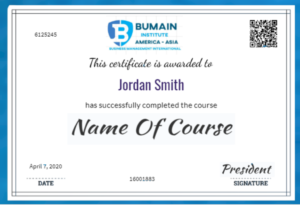
This course has been designed for beginners to help them understand the basic concepts related to XPath. This tutorial will give you enough understanding on XPath from where you can take yourself to higher levels of expertise.
XPath is a query language that is used for traversing through an XML document. It is used commonly to search particular elements or attributes with matching patterns.
This tutorial explains the basics of XPath. It contains chapters discussing all the basic components of XPath with suitable examples.

Curriculum
- 9 Sections
- 42 Lessons
- 10 Weeks
- XPath - OverviewBefore learning XPath, we should first understand XSL which stands for Extensible Stylesheet Language. It is similar to XML as CSS is to HTML.2
- XPath - ExpressionAn XPath expression generally defines a pattern in order to select a set of nodes. These patterns are used by XSLT to perform transformations or by XPointer for addressing purpose.XPath specification specifies seven types of nodes which can be the output of execution of the XPath expression.8
- XPath - NodesIn this chapter, we'll see the XPath expression in details covering common types of Nodes, XPath defines and handles.5
- XPath - Absolute PathLocation path specifies the location of node in XML document. This path can be absolute or relative. If location path starts with root node or with '/' then it is an absolute path. Following are few of the example locating the elements using absolute path.1
- XPath - Relative PathLocation path specifies the location of node in XML document. This path can be absolute or relative. If location path starts with the node that we've selected then it is a relative path. Following are few examples locating the elements using relative path. firstname − select firstname related to student nodes1
- XPath - AxesAs location path defines the location of a node using absolute or relative path, axes are used to identify elements by their relationship like parent, child, sibling, etc. Axes are named so because they refer to axis on which elements are lying relative to an element. Following is the list of various Axis values.13
- XPath - OperatorsIn this chapter, we'll see XPath operators and functions in details covering commonly used XPath defines and handles. XPath defines Operators and functions on Nodes, String, Number and Boolean types. Following is the list we are going to discuss about.5
- XPath - WildcardXPath defines the following wildcards on nodes to be used with the XPath expressions.5
- XPath - PredicatePredicate refers to the XPath expression written in square brackets. It refers to restrict the selected nodes in a node set for some condition2
Instructors
Requirements
- Before proceeding with this course, you should have basic knowledge of XML, HTML, and JavaScript.
Features
- This course explains the basics of XPath. It contains chapters discussing all the basic components of XPath with suitable examples.
Target audiences
- This course has been designed for beginners to help them understand the basic concepts related to XPath. This tutorial will give you enough understanding on XPath from where you can take yourself to higher levels of expertise.



